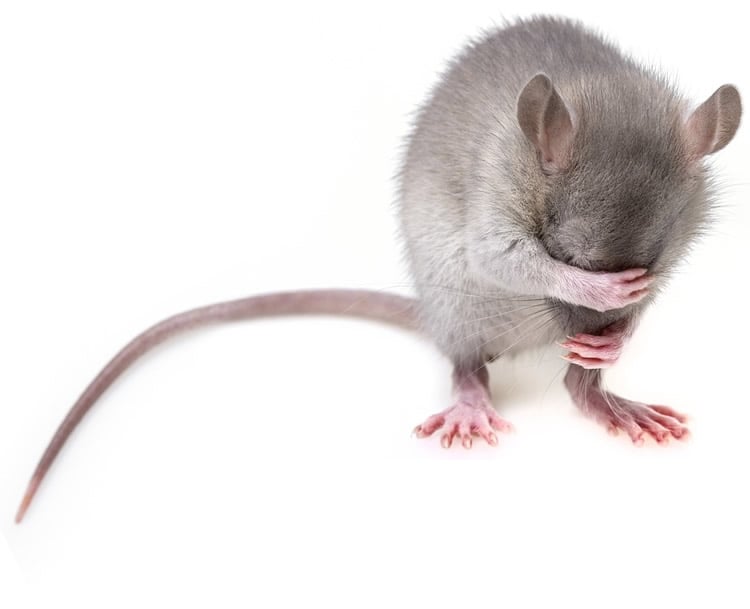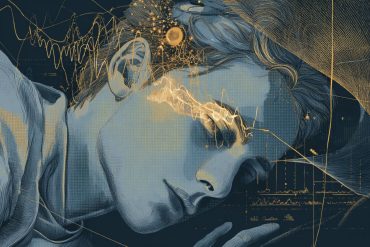Summary: Study reports the anterior cingulate cortex of rats contain mirror neurons that respond to pain experienced by and observations of others.
Source: KNAW
Why is it that we can get sad when we see someone else crying? Why is it that we wince when a friend cuts his finger? Researchers from the Netherlands Institute for Neuroscience have found that the rat brain activates the same cells when they observe the pain of others as when they experience pain themselves. In addition, without the activity of these “mirror neurons”, the animals no longer share the pain of others. As many psychiatric disorders are characterized by a lack of empathy, finding the neural basis for sharing the emotions of others, and being able to modify how much an animal shares the emotions of others, is an exciting step towards understanding empathy and these disorders. The findings will be published in the leading journal Current Biology on April 11th.
Human neuroimaging studies have shown that when we experience pain ourselves, we activate a region of the brain called “the cingulate cortex”. When we see someone else in pain, we reactivate the same region.
On the basis of this, researchers formulated two speculations: (a) the cingulate cortex contains mirror neurons, i.e. neurons that trigger our own feeling of pain and are reactivated when we see the pain of others, and (b) that this is the reason why we wince and feel pain while seeing the pain of others. This intuitively plausible theory of empathy, however, remained untested because it is not possible to record the activity of individual brain cells in humans. Moreover, it is not possible to modulate brain activity in the human cingulate cortex to determine whether this brain region is responsible for empathy.
Rat shares emotions of others
For the first time, researchers at the Netherlands Institute for Neuroscience were able to test the theory of empathy in rats. They had rats look at other rats receiving an unpleasant stimulus (mild shock), and measured what happened with the brain and behavior of the observing rat. When rats are scared, their natural reaction is to freeze to avoid being detected by predators. The researchers found that the rat also froze when it observed another rat exposed to an unpleasant situation.

This finding suggests that the observing rat shared the emotion of the other rat. Corresponding recordings of the cingulate cortex, the very region thought to underpin empathy in humans, showed that the observing rats activated the very neurons in the cingulate cortex that also became active when the rat experienced pain himself in a separate experiment. Subsequently, the researchers suppressed the activity of cells in the cingulate cortex through the injection of a drug. They found that observing rats no longer froze without activity in this brain region.
Same region in rats and humans
This study shows that the brain makes us share the pain of others by activating the same cells that trigger our own pain. So far, this had never been shown for emotions – so-called mirror neurons had only been found in the motor system. In addition, this form of pain empathy can be suppressed by modifying activity in the cingulate cortex.
“What is most amazing”, says Prof. Christian Keysers, the lead author of the study, “is that this all happens in exactly the same brain region in rats as in humans. We had already found in humans, that brain activity of the cingulate cortex increases when we observe the pain of others unless we are talking about psychopathic criminals, who show a remarkable reduction of this activity.” The study thus sheds some light on these mysterious psychopathological disorders. “It also shows us that empathy, the ability to feel with the emotions of others, is deeply rooted in our evolution. We share the fundamental mechanisms of empathy with animals like rats. Rats had so far not always enjoyed the highest moral reputation. So next time, you are tempted to call someone “a rat”, it might be taken as a compliment…”
Source:
KNAW
Media Contacts:
Christian Keysers – KNAW
Image Source:
The image is in the public domain.
Original Research: Open access.
“Emotional Mirror Neurons in the Rat’s Anterior Cingulate Cortex”. Maria Carrillo, Yinging Han, Filippo Migliorati, Ming Liu, Valeria Gazzola, Christian Keyser. Current Biology doi:10.1016/j.cub.2019.03.024
Abstract
Emotional Mirror Neurons in the Rat’s Anterior Cingulate Cortex
Highlights
• Rat ACC contains mirror-like neurons responding to pain experience and observation
• Most do not respond to another salient negative emotion: fear
• One can decode pain intensity in the self from a pattern decoding pain in others
• Deactivating this region (area 24) impairs the social transmission of distress
Summary
How do the emotions of others affect us? The human anterior cingulate cortex (ACC) responds while experiencing pain in the self and witnessing pain in others, but the underlying cellular mechanisms remain poorly understood. Here we show the rat ACC (area 24) contains neurons responding when a rat experiences pain as triggered by a laser and while witnessing another rat receive footshocks. Most of these neurons do not respond to a fear-conditioned sound (CS). Deactivating this region reduces freezing while witnessing footshocks to others but not while hearing the CS. A decoder trained on spike counts while witnessing footshocks to another rat can decode stimulus intensity both while witnessing pain in another and while experiencing the pain first-hand. Mirror-like neurons thus exist in the ACC that encode the pain of others in a code shared with first-hand pain experience. A smaller population of neurons responded to witnessing footshocks to others and while hearing the CS but not while experiencing laser-triggered pain. These differential responses suggest that the ACC may contain channels that map the distress of another animal onto a mosaic of pain- and fear-sensitive channels in the observer. More experiments are necessary to determine whether painfulness and fearfulness in particular or differences in arousal or salience are responsible for these differential responses.







